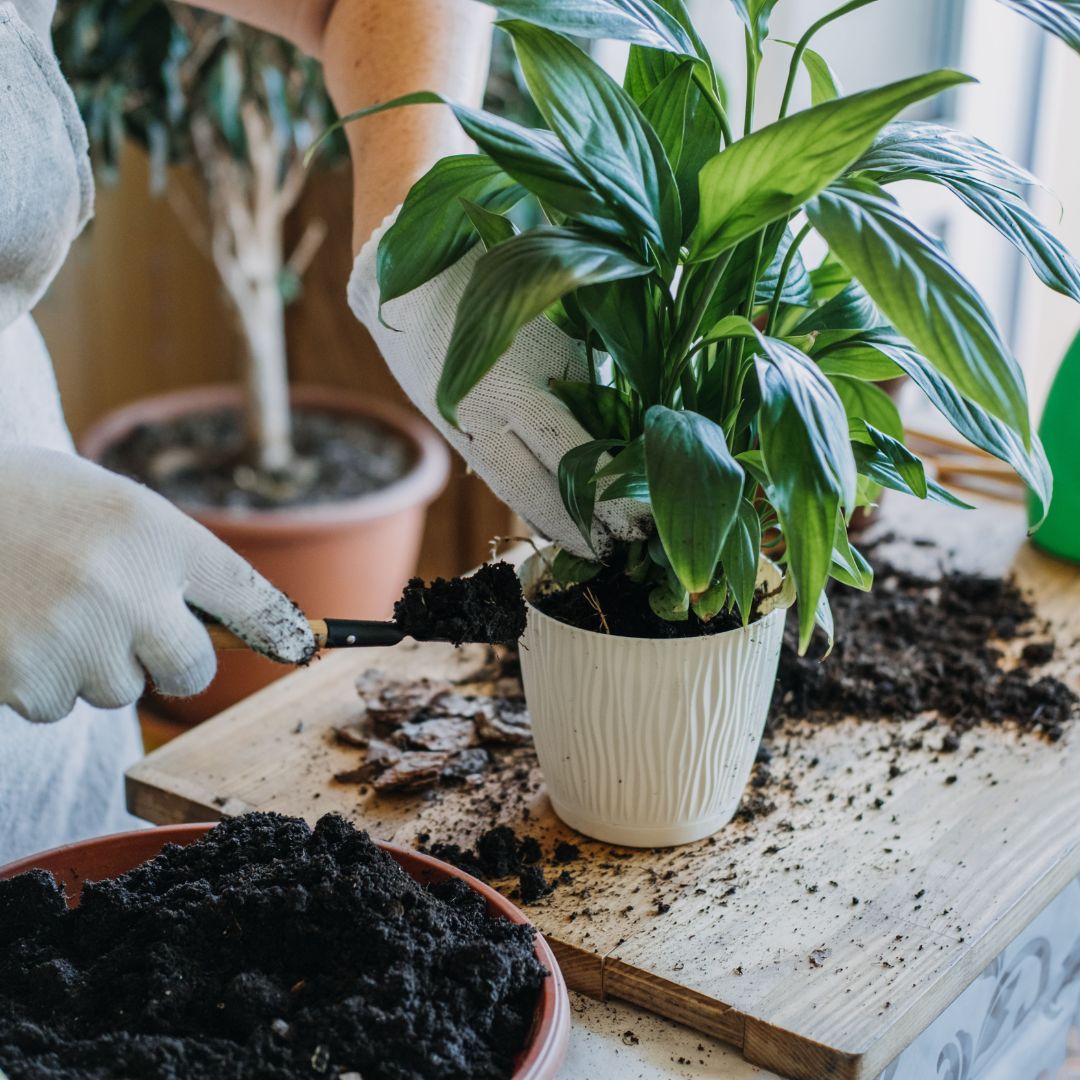Beginner's House Plant Care Guide

House plants are one of the best ways to breathe life into your home. Their luscious greenery has the potential to brighten up any drab space, and who doesn’t love a little boost of fresh oxygen in the morning? However, they aren’t without their challenges. Just like with any plant, house plants have specific needs that can be difficult for even the most experienced hobbyist.
We’ve had a thriving house plant nursery for years. We use that knowledge every day with our house plant hobbyist customers. We decided to put our heads together for a simple guide on house plant care for all levels. We're reaching out especially to you beginners out there who have questions and do not know where to start. For the expert, and anyone in between, you may learn a fun fact or two along the way. So read on to dig into the tips and tricks you need to know for this journey.

How to Select House Plants
The first step is purchasing your first house plant. But with so many options available, how can you know what the right plant for you is?
Before stepping foot in the store, you need to know what level of care and maintenance you want to take on. For beginners, we recommend starting with something low-maintenance. With an easygoing plant, you’ll be able to build your house plant care routine without fear that the plant is going to die on you any minute.
We suggest Snake Plants, ZZ Plants, and Pothos. It’s important to note that all three of these plants aren’t pet friendly. You’ll want to plan a safe, out-of-reach spot to store whichever you choose. Each of these has different light, soil, and watering requirements. Our website features
detailed information to help you get to know the plant. You can use the search bar at the top or click the links in this paragraph to read more.
How to Inspect House Plants
Awesome! You’ve picked your first house plant! Now, you’ll want to inspect your plant before swiping that card. You’re looking for pests, new growth, and the general health of the plant.
How do you do this?
First, check out the leaves. You’re searching for wilting, yellowing, or browning. Any of these can be an indicator the plant isn’t doing too hot. If you like rehabbing plants, this plant might be the perfect project for you!
Second, spend some time looking for pests and new growth. Creepy crawlies love to nest in the nodes of plants, so be sure to investigate them fully. Spotting new growth is great news! It means the plant is healthy, happy, and ready for a new home.
Finally, check the soil. If it’s bone dry you’ll want to water the plant as soon as you get home. Take caution with soggy soil: fungus gnats may be hiding their eggs in the dirt. Before you make your final decision, peep through the drainage hole to see if the roots are compacted. If you see more soil than roots, no pests, and new growth, you’re good to swipe that card!
How to Choose the Right Soil Type for House Plants
Congratulations on your first house plant purchase! Even if you don’t need to repot it immediately, you might consider it to promote healthy growth.
When choosing a pot for your plant, be sure to pick one with a drainage hole. To make the plant a bit more decorative, place the draining pot inside a decorative cache pot. We’ll dig into the details of drainage and watering later, so just put a stake in those questions for now.
Knowing what soil to choose for your house plants is simple once you understand what options are available to you. Plants that thrive in an arid climate are going to love a cactus and succulent mix. For other species, a generic potting mix or making your own like we have will be your go-to.
Cactus and succulent mix is crafted for maximum drainage and aeration. This is done by using a variety of large, rocky materials. Common ingredients include peat moss and perlite.
For most plants, you’ll be looking for potting mix. Potting mix is light and airy enough for proper drainage and aeration, but dense enough to make plants happy and healthy. Our AGN Special Blend Soil is proven to be a stand-out choice to set your plants up for long-lasting success. If your plant is an aroid, check out our Chunky Chatt Aroid Soil. Both of these mixes have been around for a year and have proven successful.
How to Choose the Right Light for House Plants
Mastering light can be difficult for house plant newbies. Indoor environments constrain natural light, making perfect plant placement a real challenge.
Some species of plants are sunbathers while others prefer a bit more shade. Easy to grow, hardy, beginner plants can usually withstand just about any level of light. But, as you expand your collection, you’ll inevitably purchase a picker plant.
The first step to becoming a lighting master is understanding what type of sunlight your house plants need: bright, indirect, medium, or low?

Low-light plants, such as our ZZ and Snake plants, can thrive in any East-facing window. They'll receive the gorgeous, warm morning sun, but it will not scorch the leaves.
These directional tips take you from a novice to an intermediate hobbyist just like that. Congrats on leveling up!
How to Water House Plants
We won’t lie to you – watering house plants correctly can be tough. Watering is a constant balancing act affected by several variables. When a plant isn’t doing well, the watering frequency and amount is the first thing we talk to our customers about. It’s important to understand your plant’s specific watering needs to keep them happy and healthy.

How to Tell When a Plant Needs Water
For most plants, you’ll want to water when the soil feels dry to the touch. If you don’t want to use your finger, consider a bamboo stick, toothpick, or wooden coffee stir. Water-guzzling plants should be watered when the top of the soil is dry. For plants acclimated to more arid environments, such as cacti and succulents, water them when most of the soil is dry or the pot feels light.
The best way to avoid over watering your plant is by getting familiar with what they need.
How to Avoid Over Watering House Plants
If you know your stuff, the next step is to be sure your plant is getting proper drainage. Always keep your house plants in a pot that can drain, either on its own or placed inside a cachepot or saucer. In those cases, be sure to check your plant after 30 minutes to pour out any excess water so they don’t get a soggy bottom.
Our last piece of advice is to avoid setting a watering schedule. When a plant needs by so many different things; no two days are the same. It’s best to build a routine of checking your plants for dryness, and then watering them when the soil is dry.
Don’t Get Discouraged!
It can be hard to get started in a new hobby, but don’t get discouraged! You are now equipped with all the knowledge you need to take your first steps. If you feel overwhelmed, don’t worry – that’s normal. Every hobby takes time to learn and we all have to start somewhere. Keep going and remember that your local America’s Gardens experts are only a phone call, email, or drive away!


Comments